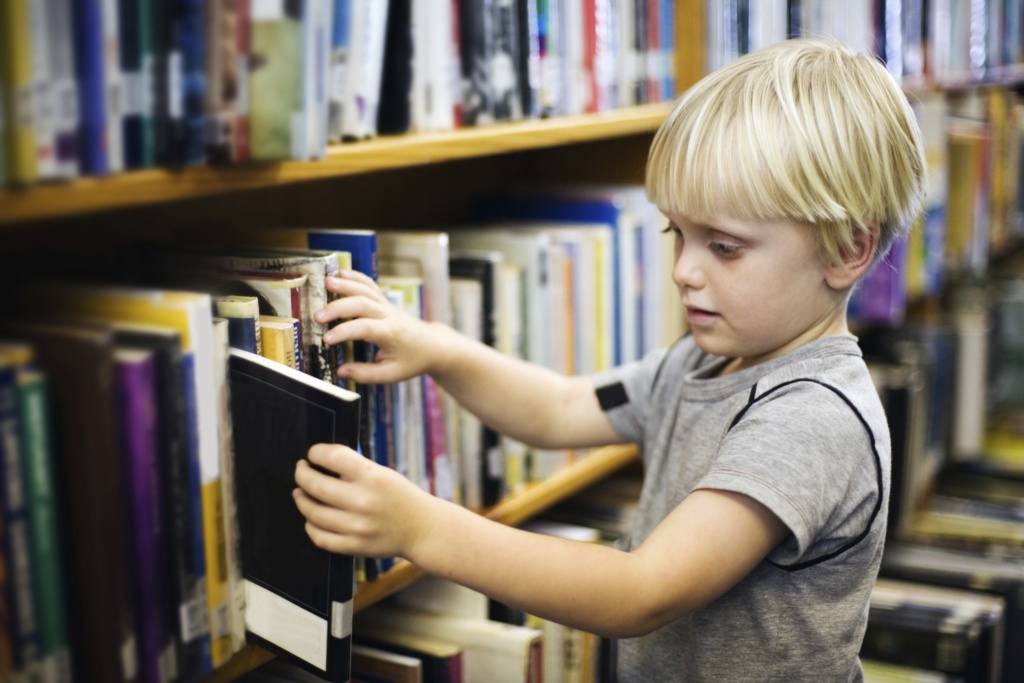
Local authorities have a duty under the Children’s Act 1989 to safeguard and promote the welfare of children who are looked after. This included promoting educational achievement.1 Over the last few years the evidence supporting reading for pleasure as a key component in raising educational and social outcomes for children has been growing.2 In Norfolk, council services are working in partnership and taking a local approach to introduce books into the homes of children taken into care and to promote reading for pleasure.
Currently there is wide gap in achievement between looked after children (LAC) and those who have never entered care. The most recently reported outcomes by the Department for Education, as of 31 March 2016, showed that at the end of Key Stage 1 only 50 per cent of LAC were performing at or above the expected reading level compared with 74 per cent for non-LAC. At the end of key stage 2, this gap narrowed some with 41 per cent of LAC at or above expected reading levels compared with 66 per cent for non-LAC.3
Since 2010 these gaps have not only remained broadly consistent, but continue to widen later in life, with only 6 per cent of young people who have been in care attending higher education compared with 50 per cent of those who have never been in care and overall children and young people who have been in care have poorer long-term employment prospects and health outcomes.4 While there are multiple factors causing this gap, looking at the wider evidence on reading and attainment, ‘it is logical to assume that poor literacy levels are a contributory factor to low attainment later in life.’5
There has been a growing body of evidence that reading for pleasure is the most important indicator of the future success of a child. As early as 2002 the OECD suggested that ‘finding ways to engage students in reading may be one of the most effective ways to leverage social change’.6 Since then, the research continues to show that reading for pleasure or outside of school is associated with higher scores on reading assessments, particularly among secondary school students.7
Reading for pleasure not only increases a child’s reading attainment but also leads to improvement in their writing ability, maths, vocabulary, spelling and general knowledge, along with improved understanding of other cultures, increased community participation and improved empathy and decision-making.8 In addition, reading for pleasure can also be a predictor of long-term success – those who read regularly at age 16 are more likely to achieve professional or managerial positions.9 The key question though, is how can a local authority encourage children and young people to read for pleasure? Well, one of the ways to do this is to provide access to books. In Norfolk, this is done by having a special library service offer for LAC and sending books directly to children in care. Just having books in the home can have a large impact on children’s reading skills and their attitude towards books. Moreover, the ownership of books is key for a child or young person’s self-perception as a reader and encourages reading.10
Book Packs for Looked After Children
Norfolk is a largely rural county, although 40 per cent of the population lives in four built up areas: Norwich, Great Yarmouth, Kings Lynn and Thetford. The population of looked after children (LAC) continues to grow in line with national figures (60 children in care per 10,000), though it remains higher than neighbouring counties in the East of England. Since 2011 the number of children in care has risen from 960 to a high of 1,150 in 2014 (69 per 10,000). It has since declined and now remains around 1,050 (62 per 10,000).11 Since 2006, Norfolk Library and Information Service has been working in partnership with the Virtual Schools for Looked After Children to help raise awareness of the importance of reading, to offer access to resources and offer support to LAC, carers and children’s services staff.
